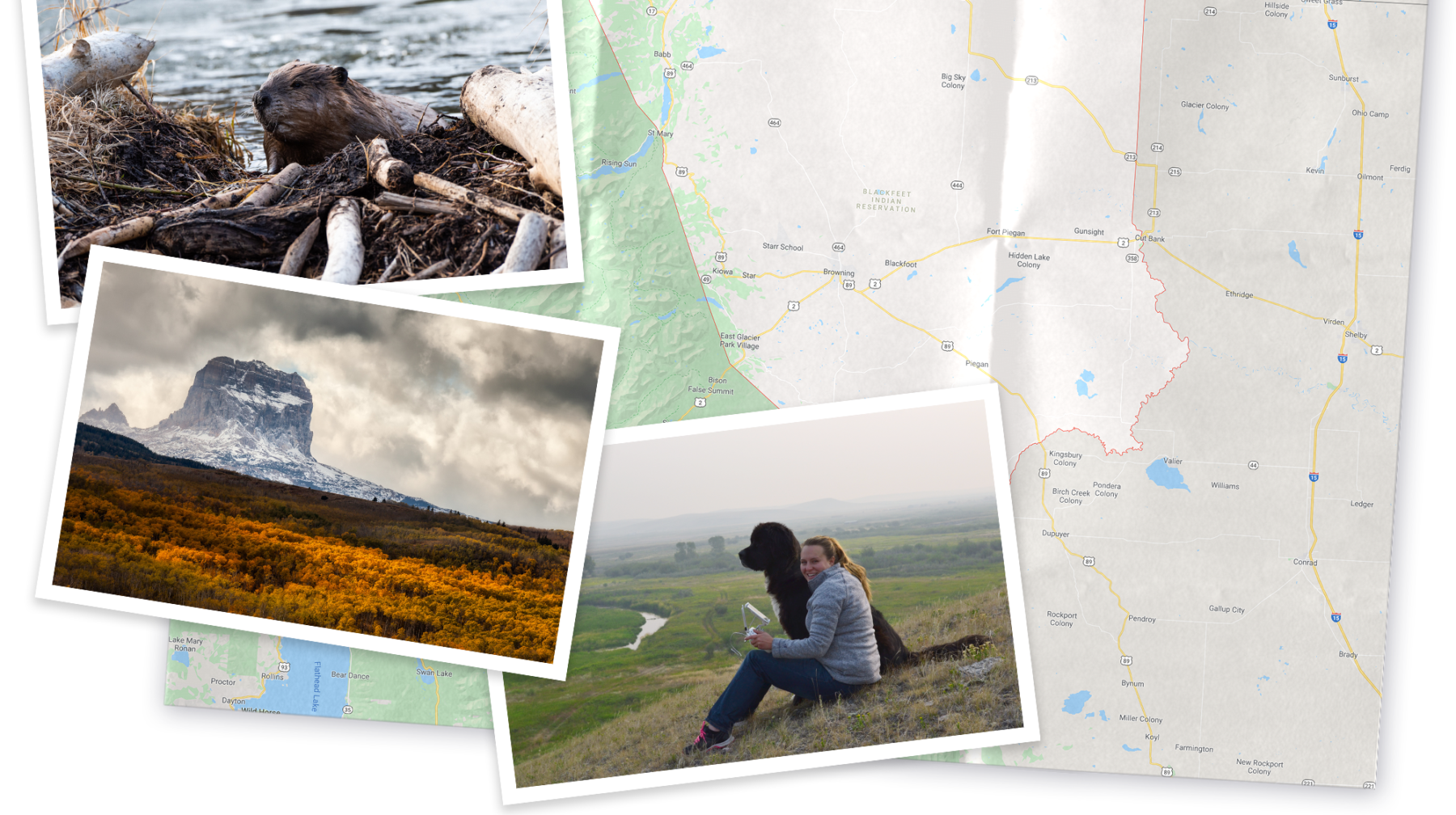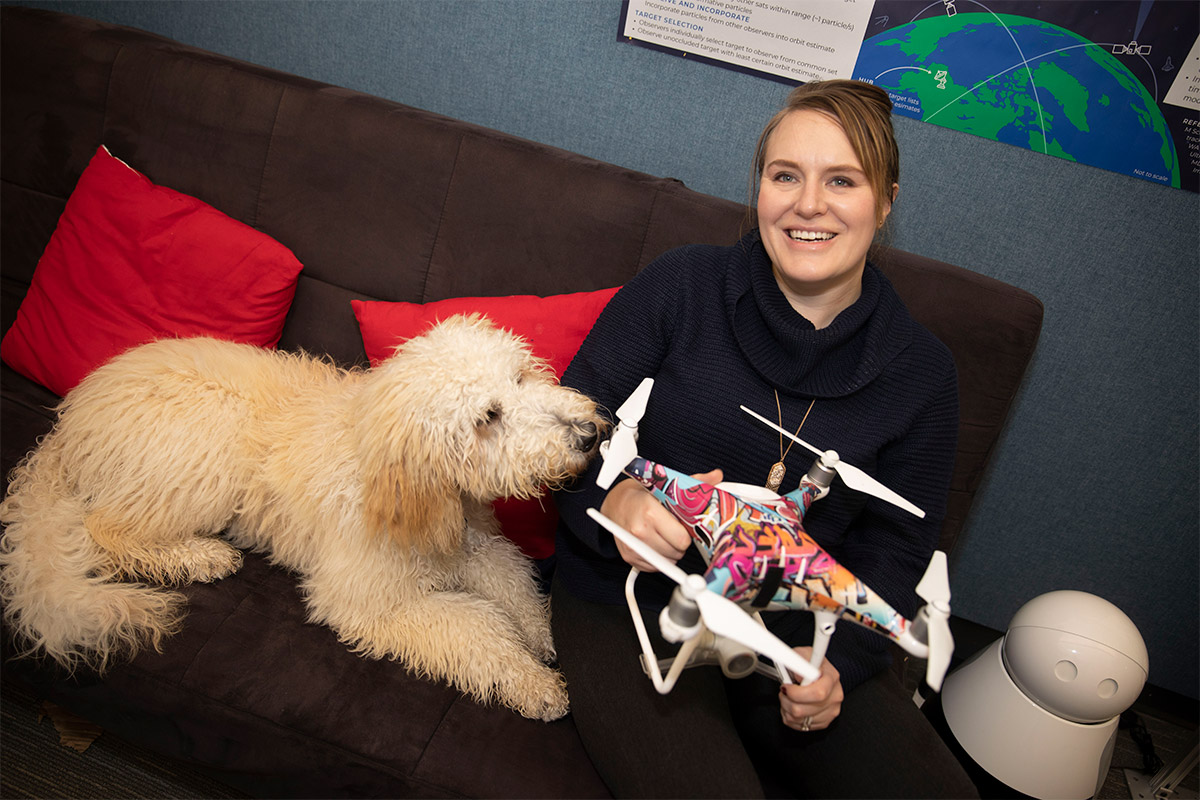
Montanan Jordan Kennedy, who grew up on the Blackfeet Indian Reservation, spent the summer there studying how beavers make dams.
Photos courtesy of Jordan Kennedy and from iStock
Learning from the land
“I could spend a whole lifetime doing science [in Montana] and not even scratch the surface of what there is to learn from the land.”
When Jordan Kennedy talks about growing up in Montana, anyone within earshot quickly understands how she feels about the state where she was raised, a place where she still spends much of her time.
“Where I grew up is so profoundly inspiring and beautiful — you can never get sick of looking at the mountains,” she says. “They look different every day.”
Kennedy, a mechanical engineering and materials science Ph.D. candidate in Harvard’s Graduate School of Arts and Sciences, grew up on a cattle ranch on the Blackfeet Indian Reservation in the northwest part of the state. She thought then that she’d follow in her cowboy father’s footsteps — she didn’t even know that “engineer” was a job someone could have.
Besides teaching his daughters the way around a cattle ranch (“You can do a lot with twine and duct tape,” she says), Kennedy’s dad inspired the focus of her doctoral studies. He called her one day during her first year in grad school and told her he’d spent an entire day tearing out a beaver dam on the property with the family tractor.
“He tells me, ‘Jordan, you wouldn’t believe all the water that came out of there … and the amount of material I had to move,’” Kennedy says. “He came back the next day, and the dam was completely rebuilt. We have a really big tractor, so you know it was quite the job.”
Her curiosity piqued about the engineering prowess of beavers, she went to investigate further and discovered there hadn’t been much work done on the subject. So, it became hers.
Using drone flights and 3-D reconstructions, Jordan Kennedy, in collaboration with the Blackfeet tribe and Professors Radhika Nagpal and L. Mahadevan, studies the process of dam network formations that change local ecology and increase biodiversity.
Courtesy of Self-Organizing Systems Research Group, Harvard University
At Harvard’s John A. Paulson School of Engineering and Applied Sciences, Kennedy is part of the Self-Organizing Systems Research Group, which studies how individuals, each with limited capabilities, manage to organize themselves to collectively perform complex tasks.
Her research looks at the materials and methods used by beavers and how they respond to local cues to build networks of dams that change ecosystems and increase biodiversity. To get a bird’s-eye view, she flies drones overhead to create maps and 3-D reconstructions that allow her to track how projects evolve.
For Kennedy, the work emerged organically from her experiences growing up in Montana.
“Growing up where I grew up, it really informs the type of questions I’m interested in and the type of science I want to pursue,” she says. The idea of doing “high-level science in a place where I grew up and expose other people to that” is essential to her.

Kris Snibbe/Harvard Staff Photographer
Each summer, Kennedy makes her way back to Montana to undertake field studies, often with the help of local students. The work includes collecting data, capturing drone footage, and even jumping in the water to take measurements around dams.
She feels it is important to do this work not only where she grew up, but with others who call the Blackfeet Reservation home. “A lot of people have made opportunities for me, and I’m now in a position to make opportunity for others — this includes hiring people from the area [where] I grew up to help with my research.”
Some might think working in rural Montana will limit what Kennedy will be able to do in her career. She doesn’t.
“I could spend a whole lifetime doing science [in Montana] and not even scratch the surface of what there is to learn from the land,” she says.
This story is part of the To Serve Better series, exploring connections between Harvard and neighborhoods across the United States.





